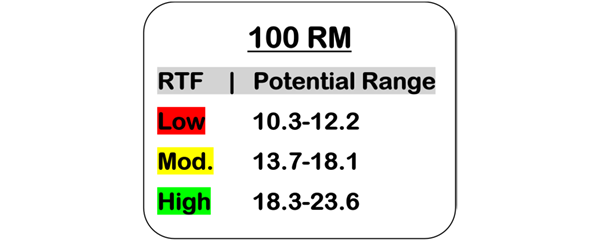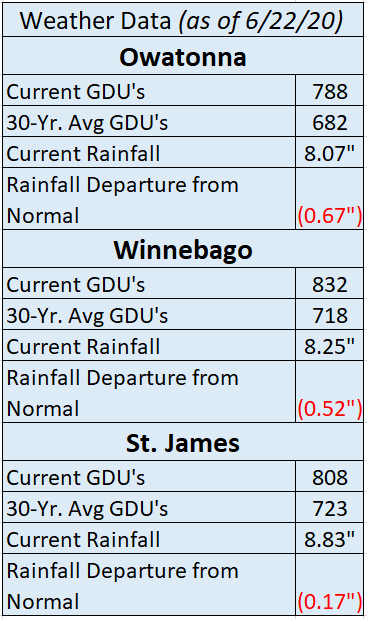2020.06.24 Growing Insights
Jun 24, 2020

|
|||
|---|---|---|---|
|
|
||
Corn Progress Update |
|---|
|
Corn is starting to enter the “grand growth phase,” and will put on a new collared leaf every 2-3 days. During the V10 to V14 growth stages, corn requires the availability of 7.8 lb.’s of nitrogen per acre/day, 2.1 lbs./acre/day of P2O5 (phosphorus) 5.4 lbs./acre/day of K2O (potassium). The “grand growth phase” also coincides with Corn Rootworm Beetle (CRW) hatch, as the current GDU’s we have received puts the CRW larval hatch over 50%. After CRW larvae hatch, they will begin feeding on corn roots as their primary food source, so now is the right time for floating corn rootworms via a bucket of water and plant roots to understand feeding pressure. |
Hybrid Response to Fungicide |
|---|
|
As corn acres start tasseling over the next month, one of the last major decisions in corn production has to be made: should I spray a fungicide? Is there a positive ROI? There’s a lot of factors to consider making the right decision!
Each year, WinField United tests around 200 hybrids across seed brands to determine response-to-fungicide (RTF) scores. Unlike most seed guides, which base disease ratings on visual observations, Answer Plot data is used to calculate the potential yield response of a fungicide application by hybrid. The trials are replicated more across locations to account for different growing conditions and geographies. The 200+ hybrids in 2019 AnswerPlot testing had a response to being treated with a fungicide range from 5.6 to 40.4 bushels per acre, with the average of 16.1 bushels per acre! 2019 was a unique year with the cool, wet weather, but 2018 seemed to have more similarities to the current 2020 season. 2018 AnswerPlot testing showed that fungicides increased corn yield, regardless of the disease pressure. It reminds us of the plant health benefits that come from fungicides, and the impact on not only disease control, but increased plant growth efficiency and increased tolerance to stress. RTF scores are the best leading indicator of a potential plant health response to fungicide that results in additional yield due to genetic differences! The respective yield response by RTF in bushels/acre for the 100 RM hybrids in 2018 AnswerPlot testing can be found below. |

There are many factors that we consider when it comes to an application recommendation for a fungicide. For example, we are likely to suggest a fungicide application if you have a high RTF variety and will look at additional factors (see below) if you have a moderate or low RTF variety.
Disease Factors
- Yield Potential and ROI: A fungicide application comes with a cost. We will only suggest a fungicide application if the field has positive yield potential and the finances make sense.
- Variety: Hybrids have different disease tolerance and responses to a fungicide application
- Crop Rotation: Corn-on-corn rotation increases the risk of disease pressure.
- Tillage: Previous crop residue left after tillage provides nutrients for pathogen growth and spore production.
- Weather: Diseases thrive under certain conditions. Some diseases thrive when it's warm and wet while others do well average to below-average temperatures and moisture.
We don’t know what rainfall amounts or temperatures will look like in the coming weeks, but early planting dates and GDU’s above normal have given us really strong yield potential.

